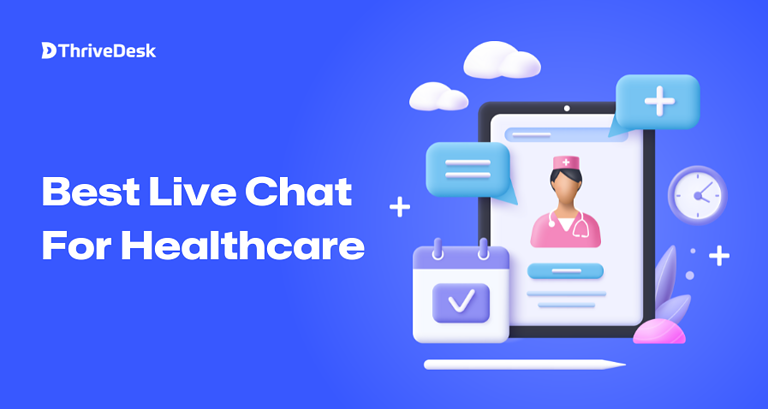Picture this: a library bursting with answers, waiting for you. A knowledge base empowers teams and enhances customer experiences, becoming essential for success. It organizes a wealth of information, making it easy to access and share.
Creating one may seem daunting, but fear not. With powerful tools like ThriveDesk helpdesk software, building and managing a knowledge base becomes achievable.
This journey transforms confusion into clarity, ensuring everyone can find what they need.
In this article, we’ll explore a roadmap designed just for beginners. From defining your purpose to promoting your knowledge base, each step matters.
Let’s embark on this rewarding adventure together!
Table of Contents
Define the purpose of your knowledge base
Defining the purpose of a knowledge base is vital. Start by identifying current knowledge gaps. Do customers ask the same questions frequently? This insight will guide the necessary content.
Understanding your audience helps shape the format. Ask yourself: Is this for customers, employees, or both? Each group requires tailored content.
Determine what your knowledge base will offer. Will it provide self-service support, in-depth tutorials, FAQs, or all? A clear purpose drives effective content creation.
Here’s a simple checklist:
- Identify common customer questions or issues.
- Assess who the knowledge base is for.
- Determine the primary goals (e.g., self-service, tutorials).
| Goals | Content Type |
|---|---|
| Self-Service | FAQs |
| In-depth Learning | Tutorials |
| Quick Navigation | Search Bar |
Crafting a well-organized knowledge base enhances user experience. It’s essential to focus on making information easily accessible and structured. This ultimately improves customer satisfaction and empowers support teams.
Choose the right software for your needs
Choosing the right knowledge base software is vital. It enhances usability, scalability, and integration. Above all, your tool must be accessible.
A strong search tool is crucial. Customers must easily find information. Using relevant key terms is essential.
Choose software that’s search engine friendly. This helps content discovery on Google and Bing. It’s important for reach and effectiveness.
Integration with other applications is beneficial. Look for integration with help desks, live chat, and analytics. This expands capabilities and streamlines workflows.
Regular maintenance is key. Train users on your software. That ensures everyone uses it proficiently.
Here’s a checklist for choosing software:
- Ease of use
- Strong search tool
- Search engine friendly
- Integration capabilities
- Regular maintenance and training
Below is a feature comparison table:
| Feature | Benefit |
|---|---|
| Search Tool | Easy information retrieval |
| Integration | Streamlined workflows |
| Search Engine Friendly | Increased content visibility |
Identify core elements essential for your knowledge base
Creating a robust knowledge base demands focus on core elements. Key components include articles, an efficient search bar, and clear content categorization.
A well-organized knowledge base enhances user experience significantly.
Centralizing information is crucial for streamlined management. It helps users access relevant details quickly, improving customer satisfaction.
Regular updates keep your knowledge content current and valuable. Editing articles regularly is essential to maintain high-quality information. Always ensure the knowledge base remains relevant to its users.
Effective knowledge base software supports various document formats. Features like version tracking and access controls are also vital. These functionalities ensure user-specific content security.
Organized categories split information into digestible sections. This structure makes navigation easier and more intuitive. Users can find answers without undue hassle or delay.
| Core Elements | Importance |
|---|---|
| Articles | Deliver specific, informative content |
| Search Bar | Allows easy retrieval of information |
| Categorization | Promotes easy navigation |
| Regular Updates | Ensures content is always current |
Organize content with clear categories and subcategories
Organizing a knowledge base requires clear categories and subcategories. Limit top categories to under ten to avoid confusion. This helps users find answers quickly and efficiently.
Creating broad categories allows subcategorization by specific topics. This structure supports effective navigation and content management. For example, “Product Features” can have subcategories like “Installation” and “Troubleshooting.”
Enhance user experience with tags and labels. These improve searchability and guide users to relevant information. Use prominent search bars to boost information discovery efficiently.
Maintain consistency with structured article templates. Predefined fields ensure quality and uniformity. Regular updates based on user feedback keep content relevant.
Here’s an example of an organizational structure:
| Main Category | Subcategory |
|---|---|
| Customer Support | Common Issues |
| Product Features | Installation Guide |
| Company Policies | Return Procedures |
Incorporate a robust search functionality
Creating a knowledge base with robust search functionality is key. Customers can input specific keywords quickly. This feature avoids unnecessary scrolling through unrelated content.
A search bar that predicts user input is vital. It generates a list of results promptly. Users find navigation to desired information easier.
Integrating a strong search system enhances customer satisfaction. It prioritizes frequently clicked and relevant results. This boosts the user experience significantly.
Easy access to the search bar is essential. It reduces user frustration and promotes a smooth interaction. Quick access improves overall satisfaction with the knowledge base.
Effective search capabilities empower users to locate solutions. This reduces dependency on direct support. It promotes a self-service model, enhancing efficiency.
Here’s a simple breakdown:
| Feature | Benefits |
|---|---|
| Predictive Search | Quick navigation, saves time |
| Strong Integration | Presents relevant, frequently clicked results |
| Easy Access | Reduces frustration & improves interaction |
Draft user-friendly and accessible content
Crafting user-friendly and accessible content is vital. Start by focusing on clarity and simplicity in language. Use basic terminology to answer common customer questions.
Incorporate a consistent editorial process to ensure content quality. Engage subject matter experts for accurate information. Regularly update articles to maintain relevance and trust.
Here’s a simple guideline:
- Use headings and subheadings for easy navigation.
- Bullet points can highlight vital information.
- Include visuals to support the text.
Here’s a summary table to enhance accessibility:
| Element | Purpose |
|---|---|
| Clear Language | Ensures easy understanding |
| Editorial Process | Maintains quality |
| Subject Matter Experts | Provides accuracy |
Also, use consistent colors and themes reflecting your brand. This strategy boosts engagement and user experience. Ensure a prominent search bar for faster content discovery.
Use visuals to enhance understanding and engagement
Visuals significantly boost understanding and engagement in knowledge bases. Users process visual content 60,000 times quicker than text. This means visuals are essential for efficient knowledge transfer.
A balanced mix of visuals and text caters to diverse preferences. Some users prefer written content, while others benefit from video tutorials or images. Offering options ensures all users can access information effectively.
Visual aids are particularly effective for technical processes and multi-step instructions. They simplify complex concepts, making learning engaging. Screenshots and videos can illustrate these processes clearly.
Incorporating visuals enhances a knowledge base, making it more user-friendly. While creating your knowledge base, consider using these elements:
- Screenshots: Illustrate step-by-step procedures.
- Instructional videos: Provide dynamic guidance.
- Infographics: Visualize data and processes.
Create a consistent voice and tone throughout articles
Creating a consistent voice and tone in your knowledge base is vital. It ensures a clear message for both team members and customers.
Using unified terms helps in avoiding confusion across departments. For example, sales and engineering may describe processes differently. A standardized language helps bridge such gaps.
Here are some benefits of consistency:
- Clear identification of product parts
- Minimizing misunderstandings
- Enhancing customer satisfaction
Feedback is crucial for maintaining consistency. Regularly gather insights from customer support interactions. This can highlight discrepancies in your content’s voice and tone.
Consider this in your strategy:
| Department | Term Used |
|---|---|
| Sales | Prospect |
| Engineering | Lead |
Standardize these terms for coherence.
In essence, a well-organized knowledge base with a unified tone leads to a better user experience.
Encourage collaboration among team members for content creation
Encouraging collaboration among team members for crafting knowledge base content is crucial. Engaging departments such as IT, HR, and customer service brings unique insights.
This diversity makes the knowledge base more effective.
Customer service teams offer valuable feedback. Common issues and questions they encounter can be transformed into useful articles. Their input ensures the base addresses real customer needs.
Form a dedicated team for maintaining the knowledge base. This team should focus on writing and updating information regularly. Consistency in content will boost resource quality significantly.
Select contributors who interact with customers often. Their everyday experiences make the knowledge base relevant and accurate. It’s crucial their voices are heard and incorporated.
Cross-departmental collaboration enriches the content further. Each department offers specific knowledge, making the content comprehensive. An enriched knowledge base leads to higher customer satisfaction.
Create simple structures, like tables or lists, for easy navigation. A well-organized layout improves user experience. Including a prominent search bar ensures users quickly find answers to questions.
Here’s a simple table showcasing team roles and contributions:
| Department | Contribution |
|---|---|
| IT | Technical how-to guides |
| HR | Company policies and guidelines |
| Customer Service | Common customer questions and answers |
Implement best practices for content maintenance
Maintaining a knowledge base is crucial for user satisfaction. Regular reviews keep content accurate and relevant. Use analytics to track user interactions.
This data helps pinpoint improvement areas and outdated content. Feedback from customers is gold. It provides insights into their needs and guides informed content updates.
Always ensure sensitive data remains secure to build user trust.
Organize content using a structured approach. Well-categorized articles improve accessibility and usefulness. Consider these best practices:
- Regularly review articles for accuracy.
- Use analytics to track and refine content.
- Encourage customer feedback for insights.
- Secure any sensitive data firmly.
Here’s a simple layout example for content structuring:
| Category | Example Articles |
|---|---|
| Getting Started | Installing the software |
| Troubleshooting | Fixing common issues |
| User Guides | Step-by-step tutorials |
Optimize your knowledge base with these strategies for a better user experience. Accommodate your target audience by keeping content fresh and accessible.
Regularly update information to keep it relevant
Consistently updating your knowledge base is crucial. It ensures information stays relevant for users. Start by scheduling regular content reviews. This helps keep the material accurate and useful.
Customer feedback is a goldmine of insights. Use it to identify areas needing changes. Implement feedback to adapt your content as needs evolve. This will enhance customer satisfaction.
Creating a solid editorial process is vital. Ensure it includes regular reviews and updates. This helps in maintaining clear and aligned content. Users feel more confident accessing reliable information.
A simple table can track updates efficiently:
| Update Date | Article Title | Revision Summary |
|---|---|---|
| 01/15/2023 | Product Features | Added new product release notes |
| 02/10/2023 | Company Policies | Revised to reflect latest guidelines |
The final step is continuous improvement. Regular updates build trust in your knowledge base.
Monitor user engagement and feedback for improvement
Monitoring user engagement is vital for knowledge base success. Identify popular articles to prioritize improvements. Use this data to create content that resonates more with users.
Gather feedback from customer support teams regularly. Understand if your articles have reduced customer inquiries. This insight helps in crafting more effective knowledge base content.
Regular search query reviews reveal common customer questions. Update or create documentation based on these insights. It ensures your knowledge base stays relevant and user-friendly.
Track key performance indicators (KPIs) consistently. Assess the knowledge base’s effectiveness through these metrics. Data-driven insights guide continuous improvement efforts.
Table: Key Performance Indicators
| KPI | Importance |
|---|---|
| Article Popularity | Focus on what users engage with most. |
| Support Request Volume | Determine if articles reduce customer inquiries. |
| Search Query Trends | Understand frequent customer concerns. |
Including conversion rates in your monitoring can be beneficial. Higher rates indicate successful support article engagement. It reflects enhanced customer satisfaction and fewer support requests.
Leverage analytics to understand usage patterns
Leverage analytics for better knowledge base usage insights. Use Google Analytics to reveal common searches. This helps spot content gaps and trends quickly.
Analyze article traffic, contact rates, and queries. These can uncover recurring themes and language patterns. It’s perfect for targeted content creation.
Implement self-service analytics for insights on content effectiveness. These help detect trends and areas for improvement. Use this to boost user experience.
Here’s a quick table for clarity:
| Metric | Insight Provided |
|---|---|
| Article Traffic | Popular topics |
| Contact Rates | Areas needing more info |
| Search Queries | Common user inquiries and lingo |
Monitor search pattern data regularly. This informs future updates, ensuring relevance and accuracy.
Promote your knowledge base across different channels
Promoting your knowledge base can be powerfully effective. Social media platforms like Facebook and LinkedIn are key. They offer quick, inexpensive outreach to potential visitors. Concise and informative posts spark interest and clicks.
Here’s a list of channels to share your knowledge base:
- YouTube
- Blogs
Linking your knowledge base from your site’s main navigation is smart. It makes help more accessible for customers seeking solutions. Don’t forget the contact page too!
Live chat support can amplify your efforts. Tools like Help Scout’s Beacon promote articles during chats. This encourages user self-service and enhances customer experience. Remember these strategies for boosting your knowledge base’s reach.
Train your support team on how to utilize the knowledge base
Training support teams to use the knowledge base is crucial. It helps address complex queries efficiently, reducing stress. By shifting basic queries to the database, agents focus on important issues.
Benefits of Knowledge Base Training:
- Faster response times
- Enhanced customer satisfaction
- Improved accuracy
Consistent knowledge base usage boosts customer trust. Well-trained staff provide accurate information, increasing satisfaction.
| Benefit | Impact |
|---|---|
| Reduced response time | Faster query resolution |
| Increased accuracy | Consistent information delivery |
| Enhanced satisfaction | Improved customer loyalty |
Regular training minimizes search time. Support agents have more meaningful customer interactions. When agents assist with self-service solutions, customer loyalty soars.
A well-organized knowledge base and a trained support team make a formidable combination. Customer satisfaction and loyalty are bound to rise.
FAQs
The FAQ section is crucial for customer support. It’s the first place customers turn to. Answering basic questions quickly improves satisfaction.
Having comprehensive FAQs reduces customer inquiries significantly. FAQs provide information access 24/7, enhancing user experience.
What are the benefits of having a knowledge base?
A knowledge base empowers users for self-service support. It reduces the workload on support teams. Centralized information ensures easy access and consistency.
Cost savings occur with fewer support tickets and calls. Businesses scale support without proportional staff increases.
How do I create content for my knowledge base?
Identify key audience information needs first. Organize content with clear categories and subcategories. Use standardized titles for easy navigation.
Structure articles with steps and headers for clarity. Update content regularly for accuracy and relevance.
How often should I update my knowledge base?
Regular updates keep content accurate and relevant. Track the knowledge base to identify missing information. Use analytics for insights on user interaction.
Customer feedback helps iterate and improve content. Continuously add new updates to keep information current.
What software tools are recommended for building a knowledge base?
Knowledge base tools provide centralized information platforms. FuseBase allows custom workspace creation. CMS software like HubSpot can serve as knowledge bases.
Tools integrate with help desk and analytics software. Choose from various software solutions for business needs.
How can I measure the success of my knowledge base?
Measure effectiveness with feedback surveys per article. Track KPIs like user engagement and search queries. Monitor customer satisfaction and ticket volume reduction.
Analyze user interaction with the knowledge base. Observe conversion rates to assess support requests.
| Criteria | Metric |
|---|---|
| User Engagement | Article feedback and interaction |
| Customer Satisfaction | Support ticket volume decrease |
| Content Relevance | Search query tracking |
| Conversion Rate | Request reduction percentage |





